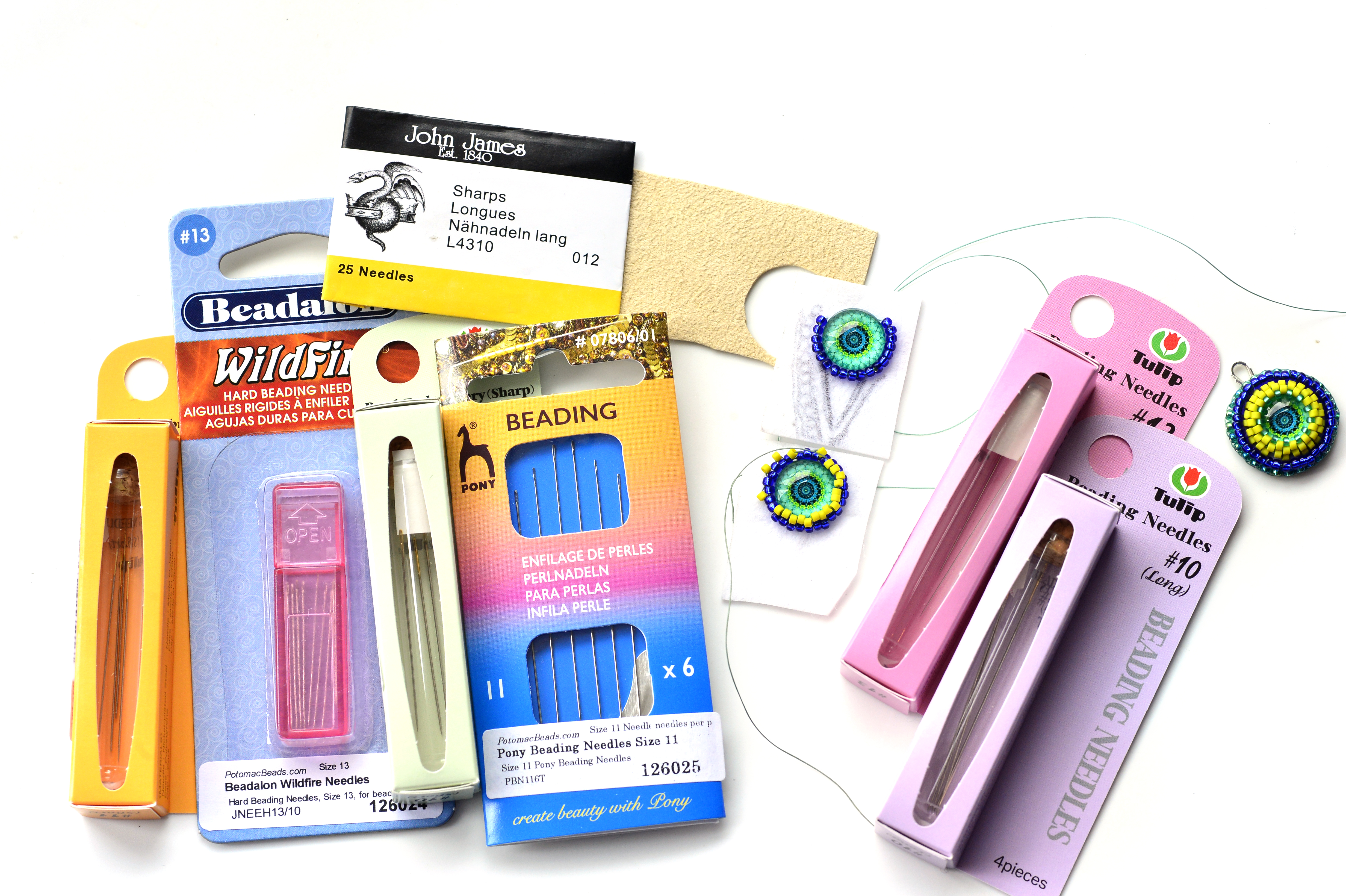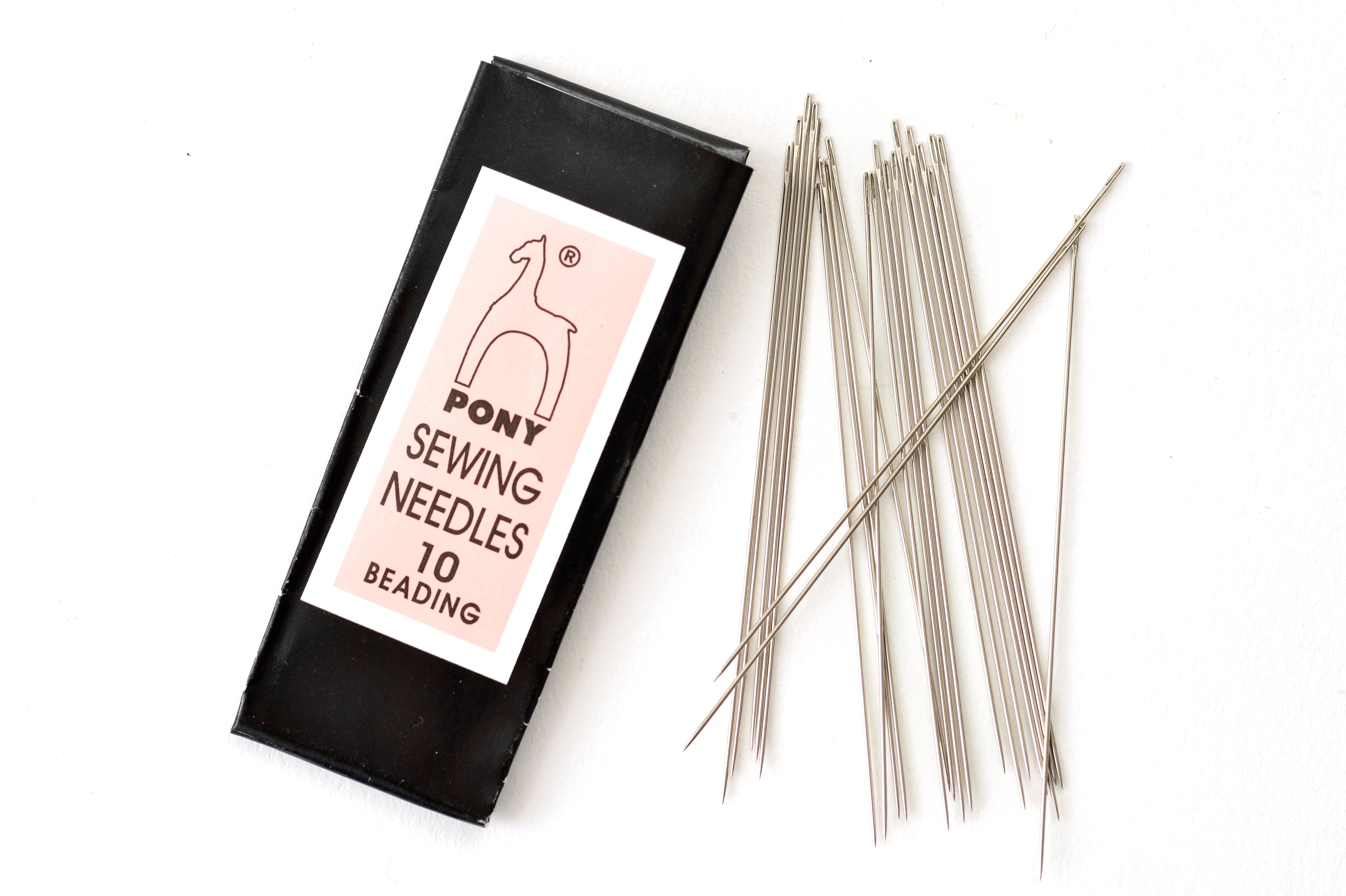- Jewelry-Making Supplies ▾
Design Jewelry with Confidence!
Seed Beads
Thread, Wire, & Stringing Materials
Findings & Components
Everything Else
- Kits & Collections ▾
Assemble Your World
Kits & Collections
- Subscriptions ▾
Want monthly Beading Happiness?
Subscriptions
- Learn to Make ▾
Want to learn more?
- Discounts & Deals ▾
Explore Today's Promotions!
-
Seed Beads
Thread, Wire, & Stringing Materials
Findings & Components
Everything Else
-
Kits & Collections
-
Subscriptions
Thread & Needles: One Beader's Review (Part 2: Needle Types)
PAGE VARIABLES - ONLY VISIBLE ON EDIT MODE *
Subtitle
In part 1 of this review, I focused on reviewing some of the more common threads available to beaders. Here, in Part 2, I will focus on the needles. There was a time when I thought that all needles were pretty much the same and they all did the same job. I took for granted that every needle would perform just as well as any other and there was no need for me to stray from the kind I had always used. Now, after trying out a few brands, I realize how important the subtle difference between them can be.
Blog Date
Blog Author
Blog Tags
Blog Category
bodyHtml
Notes: Only visible on edit mode. Update the variables above > save > then reload the page to load the values.

Short Desc and Page Image for the thumbnails showing on other pages.
By Allie Buchman

In part 1 of this review, I focused on reviewing some of the more common threads available to beaders. Here, in Part 2, I will focus on the needles. There was a time when I thought that all needles were pretty much the same and they all did the same job. I took for granted that every needle would perform just as well as any other and there was no need for me to stray from the kind I had always used. Now, after trying out a few brands, I realize how important the subtle difference between them can be.
Needles
Needles are just as important as thread when it comes to enjoying the beading experience. As the tool you’ll use to stitch each part of your project together, it is important that you find a needle that not only does the job, but one that feels good in your hand and has the appropriate amount of flexibility and length.
Pony Needles
These needles are long enough to grip easily and easily bendable. Although I’ve bent many Pony needles too badly in one project to use in another, I believe it is still worth it for the price. Since I always keep a pair of flat nose pliers handy, it is easy to bend the needles straight again if I get the needle too bent to continue.
One advantage of a more flexible needle is that it is very unlikely to snap in half. I hear lots of other beaders complain about their needle snapping in half while they are in the middle of a project. I hadn't had this happen to me until I used some less flexible needles. Not all stiff needles will snap, but it is more likely that you will snap a stiff needle.

Wildfire Needles
The Wildfire needles are much shorter than Pony needles. The short length is preferable for intricate patterns where you may have less room to work with your needle, but I found that it took me a while to adjust to the needle itself. I wasn't used to holding and pushing a shorter needle through my project. This made my stitches a bit awkward or clumsy. I ended up with looser stitches and my project was loose. This won't happen to everyone; if you are accustomed to using a short needle, you will probably love the Wildfire needle. These needles are also less easy to permanently bend, but are still flexible enough to maneuver through tight spaces. My overall assessment of the needle is that it is great for when you are working in a small space. In the picture below, you can see the length of the Wildfire needle in comparison to others.

John James Needles
Another needle that is similar to the Wildfire is the John James needles. These needles are available in both short and long and are pretty flexible. The only down side to these needles is that I have heard more reports from customers about John James needles breaking than other needles.

Tulip Needles
These needles are generally more rigid than the other needles and generally have a heavier, more substantial feel in my hand. They held up better over time than any other needle I had used previously. I could complete an entire project without permanently bending the needle. Although Tulips are not as flexible as some other needles, I didn't feel like they were going to snap. These needles are also a bit more expensive than other needles, but I believe they are worth it. Many projects require you to spend hours with the needle and thread in your hand. It's important to choose materials and tools that you are going to enjoy working with.

Big Eye Needles
I wanted to also make a quick note about the big eye needles. I didn't include them in my needle experiment, but it is worth mentioning them for those who are curious. The eye of the big eye needles runs the entire length of the needle. These needles are also very flexible, possibly too flexible. The advantage of the large eye is, of course, that it is very easy to thread. However, with this comes a needle that becomes so flexible, it may not be stiff enough to easily push through your project. When I am designing a new project, I tend to go back through the same bead many times. This causes the hole in my bead to get very tight and I need a stiff needle that will be easy to push though. Personally, I don't use these big eye needles because they just don't offer the stiffness I need.

If you, like me, have been stuck in a needle and thread rut, don’t hesitate to sample some different products for yourself. You may find that the characteristics that separate one product from the next make all the difference. Don't let advertising or the opinion of other beaders stop you from trying something new for yourself. You’ll never know what thread or needle is your favorite until you try them all!
-Anna Taylor
Highest Quality
Products
100% Money
Back Guarantee
Fast
Shipping
Best Teaching &
Customer Service
You'll want these emails...
Get Free Projects & Inspiration
Get Free Projects & Inspiration
- Bullet 1
- Bullet 2
- Bullet 3
-Transparent.png)
240 N Prospect St. Hagerstown, MD 21740
(301) 393-4667
hello@potomacbeads.com
Copyright © PotomacBeads
